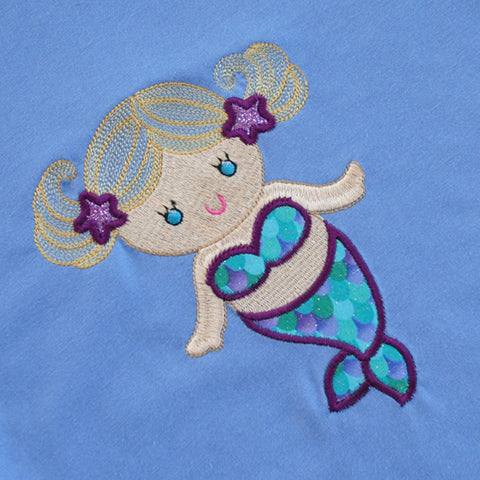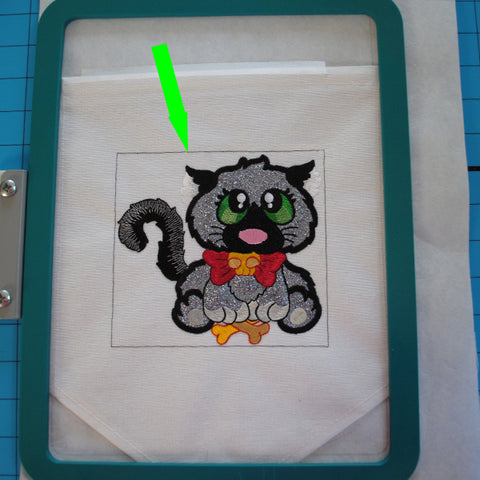
Whether you are new to machine embroidery or are an experienced stitcher, some of these terms may be new to you! Here is the first installment of Machine Embroidery A to Z. We will periodically feature some terms and techniques infused with tutorials and tips and always welcome your tips, too!
Applique
Applique is the process of adding fabric or vinyl (sometimes multiple layers) onto other fabric. Applique designs include stitching steps that show where to place the fabric which is then tacked down to the base fabric and stabilizer before being trimmed to the placement stitch line. Additional applique and embroidery may occur with final applique fabric edges being encased in decorative stitching like blanket stitch or, most often, satin stitches.
Basting Stitches
Basting stitches help to hold your fabric, batting, and stabilizer together in the hoop. They can also be used for lining up multiple design files and are especially helpful with hard-to-hoop items and when re-hooping a project that popped out mid-embroidery.
Cut Files

Many machine embroidery designs, including Bonnie’s, include cut files, also known as SVG files.

These can be used with special cutting machines like Silhouette Cameo, Brother ScanNCut, or Cricut. Cut files are especially useful because cutting machines use them to cut out applique fabric/vinyl shapes for easy tack-down without stitching and trimming by hand in the hoop.
Digitizing
In simple terms, machine embroidery is essentially painting fabric with thread. Each piece of artwork must be digitized, or converted into files that can be read, translated, and stitched by embroidery machines. The technique is not just a click and stitch.

The best digitizers, like Bonnie, manually digitize their designs. That means they manually click around the artwork adding various stitches to shapes one section at a time. They take into account fabric types, embroidery techniques, thread weight, push, pull, density, stabilization, path order for minimal jumps, hours of test stitching, and alignment of the planets. For me, I’ll leave it to the professionals!
Stay tuned for future installments!
Debbie Henry
Sew Inspired by Bonnie



Debbie Henry - May 06, 2024
Glad to hear it Norma!
Norma - April 30, 2024
I’m learning a lot, thanks
Debbie Henry - April 27, 2024
Thanks for reading, Christine!
Debbie Henry - April 27, 2024
Ask anytime, Rose!
Debbie Henry - April 27, 2024
I’m glad, Reita – there are so many of them!
Debbie Henry - April 27, 2024
Bonnie has some great designs, Ron!
Debbie Henry - April 27, 2024
I’m so glad, Kaye – thanks for reading!
Debbie Henry - April 27, 2024
Happy to hear it, Jo!
Christine Tyler - April 23, 2024
Thank you for the information! These explanations help a bunch!
Rose M Steinmetz - April 23, 2024
I’m ready to learn more.I have alot of questions
Reita M Fisher - April 23, 2024
I’m looking forward to seeing more information like this to help me straighten out all the different terms used with machine embroidery.
Ron Ball - April 23, 2024
Like the design’s
Kaye - April 23, 2024
Loved this. Thank you.
Jo - April 22, 2024
Finally a website I can use. And increase my knowledge in embroidery.